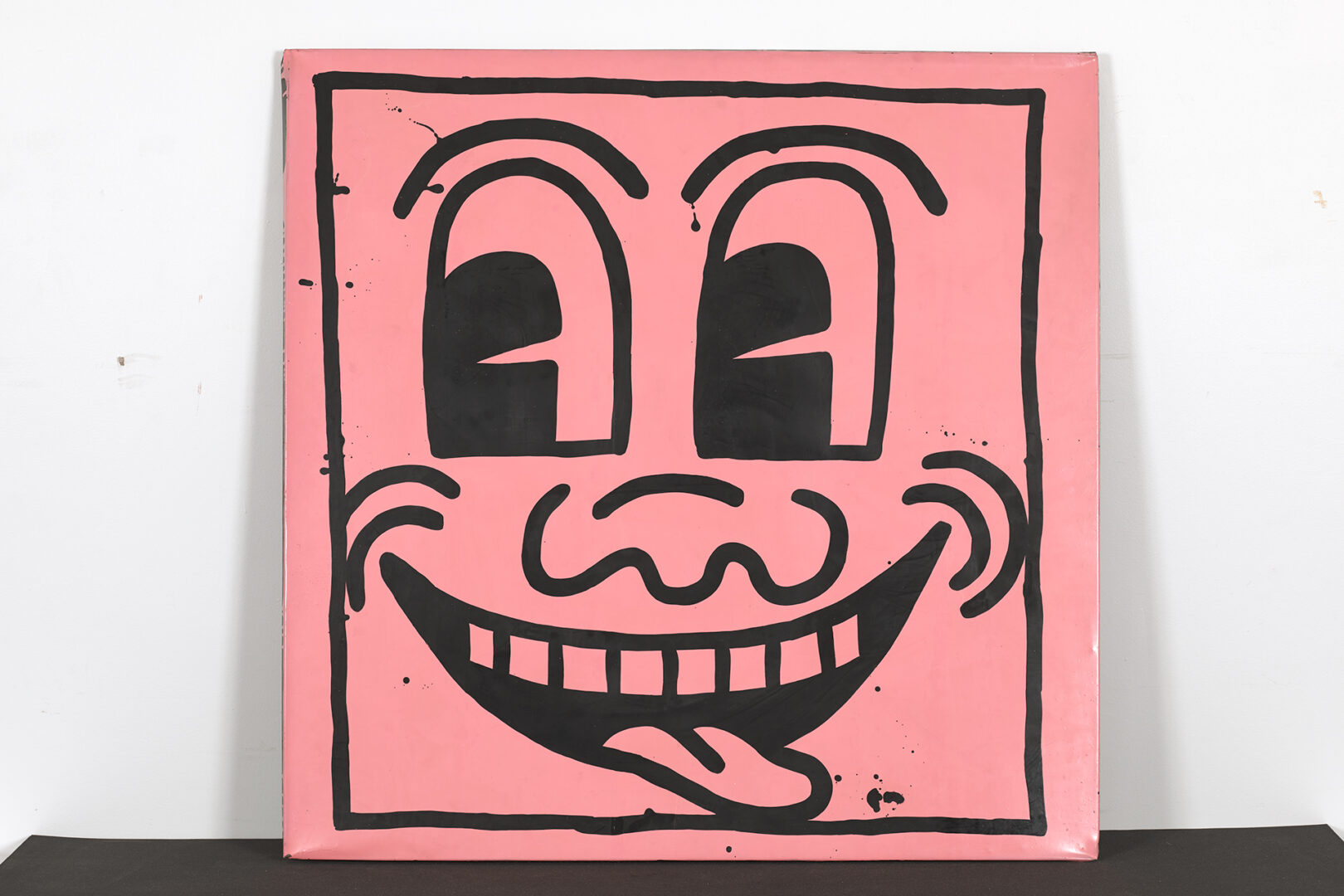Daring to Doodle: Keith Haring’s Lasting Impact On Art, Activism, and The AIDS Crisis

A truly breathtaking exhibit is coming to the Walker Art Center that will delight and move Minnesotans, especially those in the LGBTQ+ community. From April 27th to September 8th, 2024, the Walker will display over 100 works by legendary artist Keith Haring in an exhibition titled ‘Keith Haring: Art is for Everybody.’
For many in the LGBTQ+ community, Haring is a household name. The iconic street artist-turned one of the most recognizable artists in the world in the 1980s (and beyond) is best known for his simple, single line designs: humans, dogs, crawling babies, and monsters. Most people, even if they don’t know all about the life of the artist, would recognize his iconic designs. But there’s so much more to Haring’s story than that: he was an incredibly daring artist who changed the culture of art entirely in many ways. His art moves viewers, even decades after its creation, and upon seeing it, it’s very clear why.

Siri Engberg (she/her), Senior Curator and Director of Visual Arts at the Walker Art Center introduces Haring. “Keith Haring was born in 1958 in Kutztown, Pennsylvania. He moved to New York City in the late 1970s to study art. Although he began taking studio art courses at the School of Visual Arts, one of his major inspirations was hip-hop culture.” Engberg says that Haring wanted to challenge what was expected of art. Inspired by graffiti and street art, Haring “[began] creating chalk drawings in the New York City subway system. Like the graffiti writers, Haring was interested in making work in public spaces. This work was meant to reach people outside of the existing audience of museum and gallery visitors… While some works were playful, others took on serious issues like nuclear energy, and the image saturation of everyday life.” With the traction Haring’s art was picking up in New York, it’s no wonder that he gained such immense popularity. Engberg explains, “By the mid 1980s Haring was an art world star with major gallery and institutional exhibitions in the US and abroad. He worked across media, in painting, drawing, sculpture, and video. Haring continued to work in the subways, and took every opportunity to present his work outside of the expected art world spaces.” And while his art is uniquely moving in itself, it was his activism and dedication to the AIDS crisis that set him apart from many other artists.

Haring used his art as a political tool for activism, especially to draw attention to the dire AIDS crisis that was profoundly affecting the LGBTQ+ community in New York City in the 1980s. Engberg says, “while artists have been involved in direct political action since long before Haring, he and the generation of artists involved in ACT UP (AIDS Coalition to Unleash Power, other artists involved include Zoe Leonard, David Wojnarowicz, and the collectives Gran Fury, and Fierce Pussy) created posters, advertisements, performances, and direct actions that forced the US government to respond to the on-going HIV/AIDS crisis.” Haring’s art changed the culture around activism. Engberg says “Among his impacts on society was the democratization of art, and a career that questioned the boundaries between art and popular culture.” This connection of art, politics, and pop culture has deeply changed how the world views activism over the last several decades and is seen even today. Engberg continues, “His legacy persists in the work of artists like Sadie Barnette (whose work is on view at the Walker now), Wu Tsang, and Raúl de Nieves, whose creative projects are heavily inflected by their relationships with queer nightlife culture, it also persists in the ever-present art/fashion collaborations that are commonplace for both luxury and fast-fashion brands.”
Haring himself was diagnosed with AIDS in the late 1980s. He didn’t let this diagnosis, which was largely misunderstood and stigmatized in the 1980s in the U.S., stop him from his work, however. Haring bravely continued to change the world, even as he died from AIDS. Engberg explains “Haring’s AIDS diagnosis led him to create many posters and graphic designs that sought to draw awareness to the AIDS crisis, and to safer sex measures. He also created the Keith Haring Foundation, with a mandate to steward the artist’s legacy after his death, and support research and treatment for HIV/AIDS.” Even after his devastatingly premature death from AIDS in 1990 at only 31 years old, Haring continued to be a force for good in the world.

The exhibition Keith Haring: Art is for Everybody at the Walker Art Center is an incredible tribute to his life as an artist and an activist. Engberg says that throughout the more than 100 pieces of Haring’s work, “viewers will experience the full range of his artistic production from early drawings, to the day-glo paintings that first gained him [popularity] in the early 1980s, to massive works on canvas from late in the artist’s career.” This wonderful opportunity to wander through the legacy of an artist that cared deeply for our community, and loved being a part of it is truly a once-in-a-lifetime experience. Engberg adds that the exhibitions will also showcase, “a range of his collaborations with figures like Bill T. Jones, Madonna, and Grace Jones, and emphasize his connections with music, dance, and hip-hop culture… [and it will feature] an homage to the Pop Shop, an operational store in lower Manhattan launched by Haring in the mid-1980s.”
You definitely don’t want to miss out on this incredible opportunity to see the works of Haring up close and in person at Keith Haring: Art is for Everybody at the Walker Art Center. Enjoy the distinct style, invaluable cultural impact, and sheer genius of Haring’s work, for a very limited time only.
Keith Haring: Art is for Everybody
April 27-September 8
The Walker Art Center, 725 Vineland Pl., Minneapolis
www.walkerart.org/calendar/2024/keith-haring-art-is-for-everybody
5100 Eden Ave, Suite 107 • Edina, MN 55436
©2024 Lavender Media, Inc.
